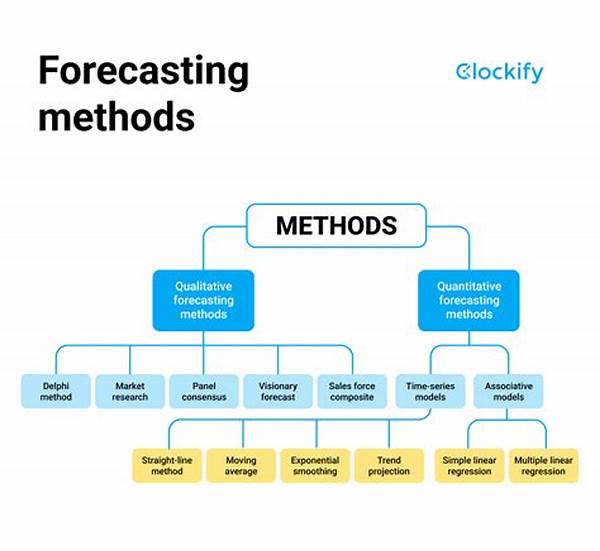In the ever-evolving world of business, staying ahead of market trends is paramount to maintaining a competitive edge. Forecasting these trends accurately enables businesses to make informed decisions, optimize resources, and capitalize on emerging opportunities. In this article, we delve into various forecasting techniques for market trends, illuminating the strategies that help businesses anticipate shifts in consumer behavior, economic conditions, and technological advancements.
Understanding Forecasting Techniques for Market Trends
Forecasting techniques for market trends serve as a compass for businesses to navigate the unpredictable waters of the market. By leveraging these techniques, companies can gain insights into future market conditions and prepare accordingly. These techniques can range from qualitative approaches, such as expert judgment, to quantitative methods, like time-series analysis. Each technique has its own set of strengths and weaknesses that make it suitable for different types of market scenarios. For instance, while qualitative methods might be ideal for gathering insights in emerging markets with limited historical data, quantitative approaches can be extremely effective when dealing with extensive datasets in established industries. By understanding and effectively applying these techniques, businesses can enhance their ability to predict changes and thus strategize more effectively.
Key Techniques for Forecasting Market Trends
1. Time-Series Analysis: This technique involves analyzing historical data to identify patterns or trends over time. It’s especially useful in spotting seasonal variations, cyclical patterns, and long-term trends.
2. Regression Analysis: By exploring relationships between variables, regression analysis helps in understanding how changes in certain factors can impact market trends. It’s widely used in predicting demand shifts and price changes.
3. Delphi Method: This qualitative technique involves gathering insights from industry experts to forecast market trends. It’s particularly helpful when quantitative data is scarce or when dealing with emerging markets.
4. Market Surveys: These surveys provide real-time insights into consumer preferences and potential trends by collecting data directly from the target audience.
5. Scenario Planning: By simulating various future market conditions, scenario planning helps businesses prepare for potential changes, allowing for robust strategic planning.
The Impact of Forecasting Techniques on Business Strategy
Implementing effective forecasting techniques for market trends can significantly impact a company’s strategic planning. Accurate forecasts provide businesses with the foresight needed to make decisions on product development, marketing strategies, and resource allocation. For example, if a company can predict a rising demand for sustainable products, it can allocate resources toward enhancing its sustainable offerings, thereby aligning with consumer values. Furthermore, understanding market trends enables businesses to mitigate risks by anticipating economic downturns or shifts in consumer preferences. This not only helps in protecting current revenue streams but also in identifying new opportunities for growth, ensuring long-term success in a competitive market landscape.
Challenges in Adopting Forecasting Techniques for Market Trends
Despite their benefits, forecasting techniques for market trends come with challenges. Data accuracy and availability are significant hurdles, as inaccurate or incomplete data can lead to unreliable forecasts. Moreover, rapidly changing market conditions can make it challenging to apply traditional forecasting models, as they may not account for sudden shifts. Additionally, businesses may face resistance internally due to skepticism about the reliability of forecasts or reluctance to rely on data-driven decision-making. Companies must invest in robust data collection processes and foster a culture that embraces analytical approaches to effectively overcome these challenges and achieve reliable forecasting.
Leveraging Technology for Enhanced Forecasting
In today’s digital age, technology plays a pivotal role in refining forecasting techniques for market trends. Advanced analytics tools, such as AI and machine learning, offer unprecedented accuracy by processing vast amounts of data and identifying patterns that humans might overlook. These technologies enable businesses to predict trends with greater confidence and finesse, providing them with a competitive advantage. By integrating technology-driven solutions, companies can develop more dynamic forecasting models that can adapt to real-time changes, helping them stay relevant in a fast-paced marketplace. Moreover, data visualization tools enhance the interpretability of complex data, allowing stakeholders to make informed strategic decisions promptly.
Cultivating Expertise in Forecasting
For businesses to harness the full potential of forecasting techniques for market trends, cultivating expertise within their teams is essential. This involves training staff in analytical methods, encouraging cross-departmental collaboration, and hiring experts with a deep understanding of market dynamics. By fostering a learning environment and encouraging experimentation with various forecasting methods, companies can build a robust framework to anticipate and respond to market changes effectively. Emphasizing continuous learning and keeping abreast of the latest industry developments ensures that businesses remain agile and capable of adapting to future challenges, thereby sustaining growth and innovation.
Summary of Forecasting Techniques for Market Trends
Forecasting techniques for market trends are indispensable tools for businesses aiming to thrive in a volatile marketplace. These techniques offer valuable insights that enable companies to predict and adapt to changes efficiently. By employing both qualitative and quantitative methods, businesses can gain a comprehensive understanding of future market conditions. While challenges such as data accuracy and rapidly shifting market dynamics exist, leveraging technology and fostering an environment conducive to analytical thinking can mitigate these obstacles. Ultimately, the strategic application of forecasting techniques empowers businesses to navigate market uncertainties, seize new opportunities, and achieve sustained success. As the business landscape continues to evolve, remaining adept in these techniques will be crucial for maintaining a competitive edge and driving innovation.
